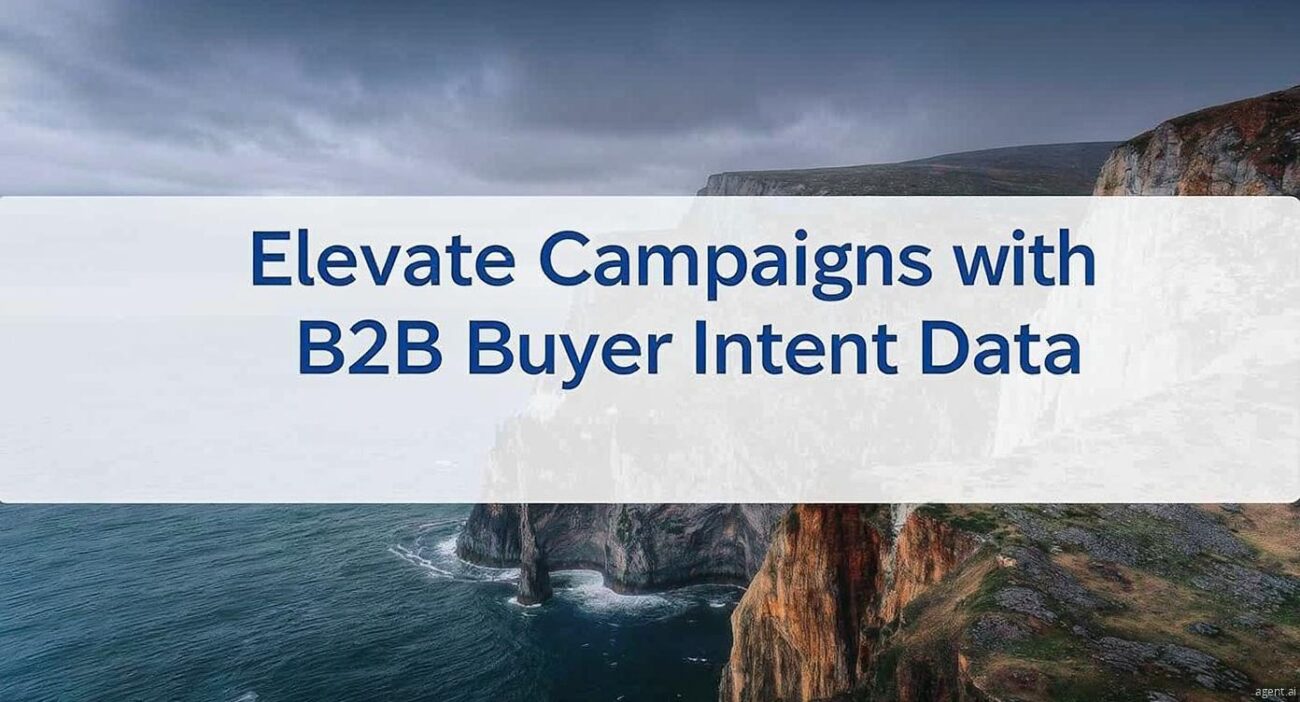In today’s hyper-competitive landscape, winning B2B buyers requires more than great products or services—it demands timing, relevance, and precision. That’s where B2B Buyer Intent Data changes the game. No longer do marketing and sales teams have to rely solely on form fills and email opens. With the right intent signals, they can engage high-fit leads the moment interest is detected.
The evolution of B2B demand generation is being powered by data-driven innovations. Let’s dive into the most impactful game-changers that are reshaping how businesses find, nurture, and close buyers in real-time.
1. Hyper-Granular Buyer Segmentation
Generic messaging doesn’t resonate anymore. By using B2B Buyer Intent Data, marketers can create micro-segments based on interest categories, purchase timelines, job titles, and firmographic attributes.
For example, a marketing campaign for a cybersecurity solution can target mid-sized financial firms actively researching compliance software. This granularity leads to messaging that clicks—literally and emotionally.
2. Intent-Powered Email Personalization
Email is far from dead—it’s just evolving. Intent signals now enable hyper-personalized email campaigns. Rather than sending generic newsletters, marketers are customizing subject lines, CTAs, and content based on a prospect’s behavioral patterns revealed through B2B Buyer Intent Data.
Someone reading content about pricing should receive a cost calculator or ROI case study. This alignment boosts open and click-through rates dramatically.
3. Dynamic Lead Prioritization with Intent Scores
Not all leads are created equal. Intent scoring adds an essential layer of intelligence by ranking leads based on behavior strength. Sales reps can prioritize leads who have shown interest across multiple digital properties, including competitor sites.
This use of B2B Buyer Intent Data helps sales teams focus efforts on the most sales-ready prospects instead of cold-calling down a long, unqualified list.
4. Real-Time Website Customization
Imagine a website that changes based on who’s visiting it. That’s now possible with real-time B2B Buyer Intent Data. When a user from a tech startup visits your product page after viewing comparison guides, your site can dynamically highlight competitive differentiators or exclusive offers.
This personalized experience improves engagement and significantly increases the likelihood of conversion.
5. Geo-Focused Campaign Targeting
Some buyers behave differently depending on their region. Modern intent platforms allow companies to filter data by geography and build geo-specific marketing campaigns. For instance, prospects in North America may respond better to whitepapers, while those in Asia prefer webinars.
Using B2B Buyer Intent Data to customize content delivery by location drives global scalability and regional relevance.
6. Intent-Based Retargeting at Scale
Retargeting has matured. Instead of targeting everyone who visited a website, marketers can now retarget users who show specific intent signals. For example, someone who explored multiple pricing-related resources can be served conversion-focused ads rather than brand awareness messages.
Intent-driven retargeting ensures marketing dollars are spent on leads who are actively considering a solution—dramatically improving ROI.
7. Seamless Sales and Marketing Alignment
One of the biggest internal challenges in B2B marketing is alignment between marketing and sales. B2B Buyer Intent Data bridges this gap by giving both teams a shared view of prospect behavior, interests, and readiness.
Marketing can hand off leads that meet a defined intent threshold, while sales teams are equipped with detailed activity histories for smarter outreach.
8. Buyer Journey Mapping with Real-Time Data
The B2B buyer journey is no longer linear, and understanding where a buyer is on that journey can be tricky. Intent data adds clarity by mapping behaviors across different funnel stages. Whether a lead is in the awareness phase or nearing purchase, marketers can tailor engagement accordingly.
This insight into where the buyer stands ensures you’re sending the right message at the right time.
9. Competitor Intent Signals for Strategic Advantage
A lesser-known yet highly powerful use of B2B Buyer Intent Data is identifying prospects engaging with your competitors. If a lead has been researching similar products or attending competitor webinars, that’s a strong signal to launch a well-timed campaign emphasizing your differentiators.
Gaining visibility into competitor-related intent gives your team an offensive edge in tight markets.
10. Content Syndication Optimization
Content syndication works better when it’s guided by intent. Instead of pushing the same whitepaper to everyone, marketers can choose which assets to syndicate to which audiences, based on interest topics gleaned from B2B Buyer Intent Data.
This improves both the quality and conversion potential of leads generated through third-party content placements.
Read the Full Blog Now @ https://acceligize.com/featured-blogs/b2b-buyer-intent-data-game-changers/
About Us
At Acceligize, we lead the global frontier of B2B demand generation, with a strong emphasis on intent-driven marketing. Operating across more than 15 countries, we empower technology companies to connect with verified, high-intent decision-makers through precision-targeted campaigns and multi-channel strategies.
By combining real-time B2B Buyer Intent Data, AI-powered insights, and a robust database of global professionals, we deliver leads that don’t just fill your pipeline but actually convert. With Acceligize, your marketing becomes smarter, faster, and more scalable.
